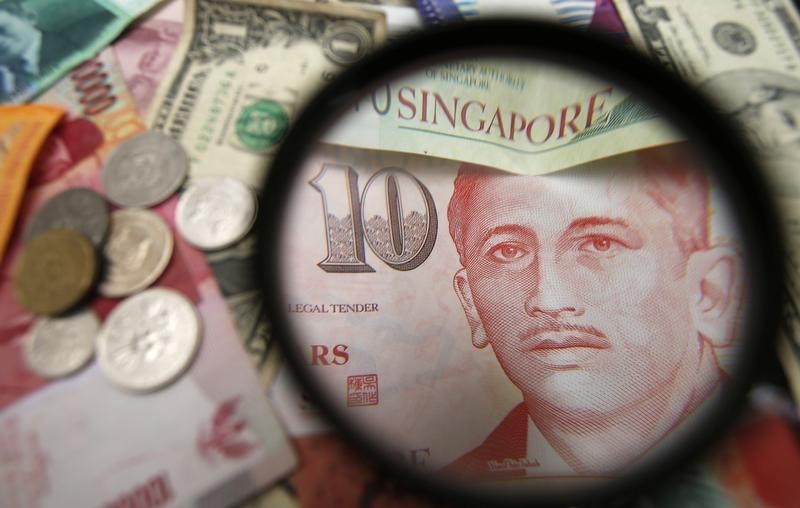* Dollar broadly supported as investors look to Fed
* Australian dollar falls after dovish RBA minutes
* Oil exporter currencies hold gains
By Hideyuki Sano and Tom Westbrook
TOKYO/SINGAPORE, Sept 17 (Reuters) - The greenback found broad support on Tuesday amid the geo-political, and economic uncertainties cast by the attacks on Saudi oil facilities, while the Australian dollar was sharply sold after a dovish readout from the central bank.
Oil prices pulled back from soaring heights touched on Monday, and the yen JPY= and Swiss franc CHF= gave up gains driven by knee-jerk safe-haven buying. O/R
The dollar rose to its strongest since Aug. 1 against the yen, touching 108.36 yen, helped also by U.S. President Donald Trump announcing he'd struck trade agreements with Tokyo. were slight, however, as traders await outcome of the U.S. Federal Reserve policy meeting on Wednesday, with strong expectations for a cut in interest rates, and Bank of Japan meeting on Thursday that could result in more stimulus.
"The market is in limbo between the oil price shock and the Fed meeting," said Matt Simpson, senior market analyst at Gain Capital in Singapore.
"Like any price shock, people go: 'What the hell has happened? What do we make of that...it didn't really spill over to currency markets like we might have expected."
The dollar index .DXY held on to Monday's gains to stand at 98.609. The euro stood a touch stronger at $1.1010 EUR= , while the Swiss franc CHF weakened slightly to $0.9919.
The Chinese yuan wavered, shedding 0.3%, as a lack of news ahead of meetings scheduled on Thursday between junior U.S. and Chinese trade officials began to sap markets' optimism about chances of a breakthrough in negotiations to end a protracted tariff war. biggest major mover among major currencies was the Australian dollar AUD=D3 , which dropped 0.4% to an 11-day low, dragging the New Zealand dollar NZD=D3 with it, after the Reserve Bank of Australia flagged an easing bias in meeting minutes. no longer talk about an accumulation of evidence in order to ease again, and highlight risks to the global economy," said National Australia Bank Senior FX Strategist Rodrigo Catril. "It certainly sounds a lot more dovish than before."
Another factor boosting the greenback on Tuesday was some exiting of bearish dollar bets in advance of the U.S. Federal Reserve's two-day policy meeting.
Traders widely expect the Fed will cut interest rates by a quarter of a percentage point on Wednesday.
But their certainty around the timing has faltered in recent days, with the probability that the Fed will stand pat rising from about a fifth to 33% this week, while expectations for two more rounds of cuts by Christmas remain intact. FEDWATCH
"Markets are pricing in two additional rate cuts by next year but the Fed is unlikely to make such a forecast, so we could see further gain in the dollar," said Yukio Ishizuki, senior strategist at Daiwa Securities.
Oil-producing currencies clung to Monday's gains in the wake of attacks that have cut Saudi Arabia's production in half.
Yemen's anti-government Houthi movement, an ally of Iran, claimed responsibility for the attack.
U.S. President Donald Trump said on Monday said it looked like Iran was behind the strikes but stressed he did not want to go to war. Iran has rejected the U.S. charges. Norwegian crown gained almost 1% Monday to trade at 9.8565 per euro EURNOK= while the Russian rouble EURRUBTN=MCX hit a near seven-week high against the euro.
Each held those gains in Asian trade while oil importer currencies weakened, with the South Korean won KRW= retreating further from a two-month high touched on Monday, dropping 0.4%, while the Taiwan dollar TWD= shed 0.2%.
